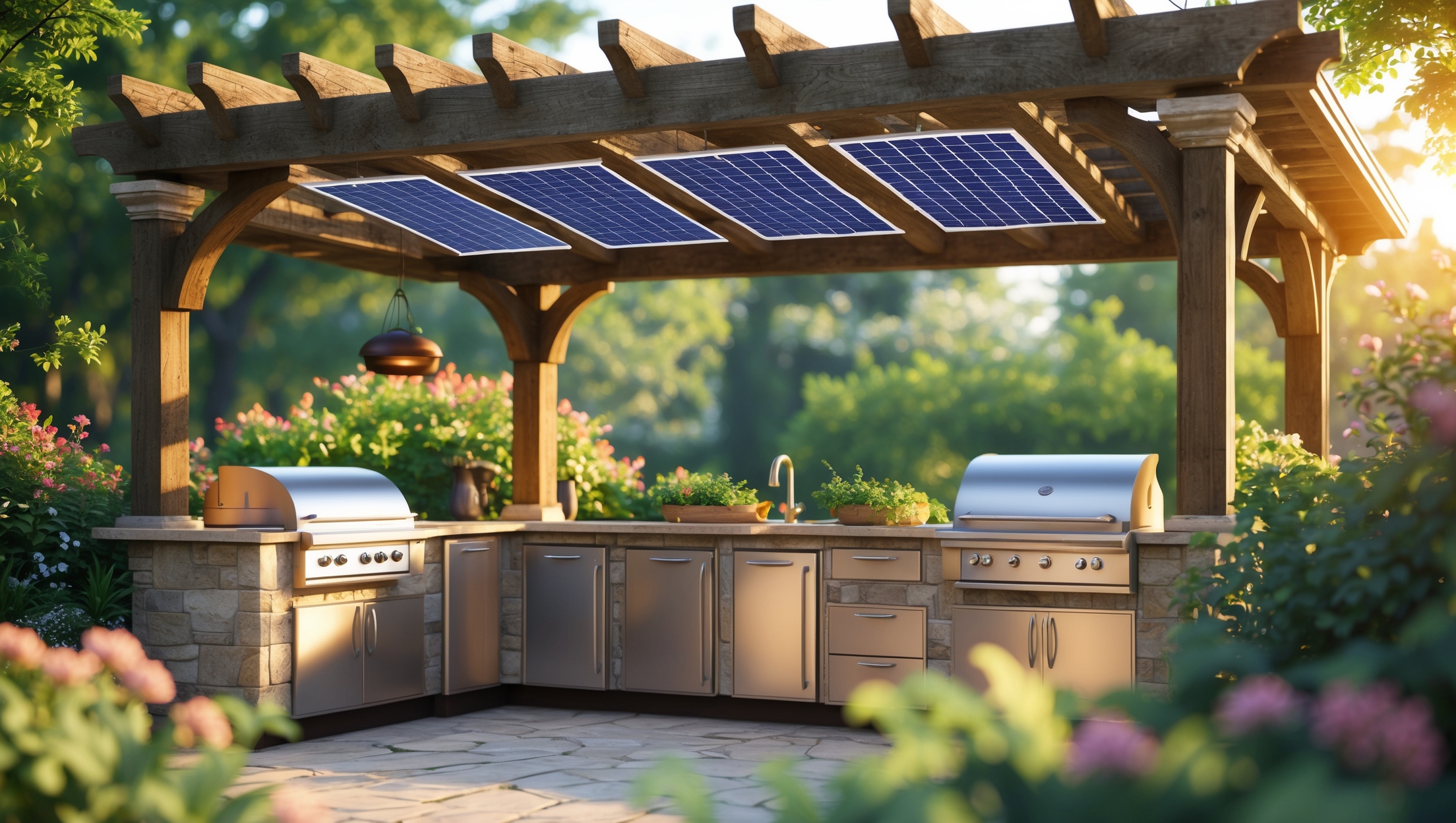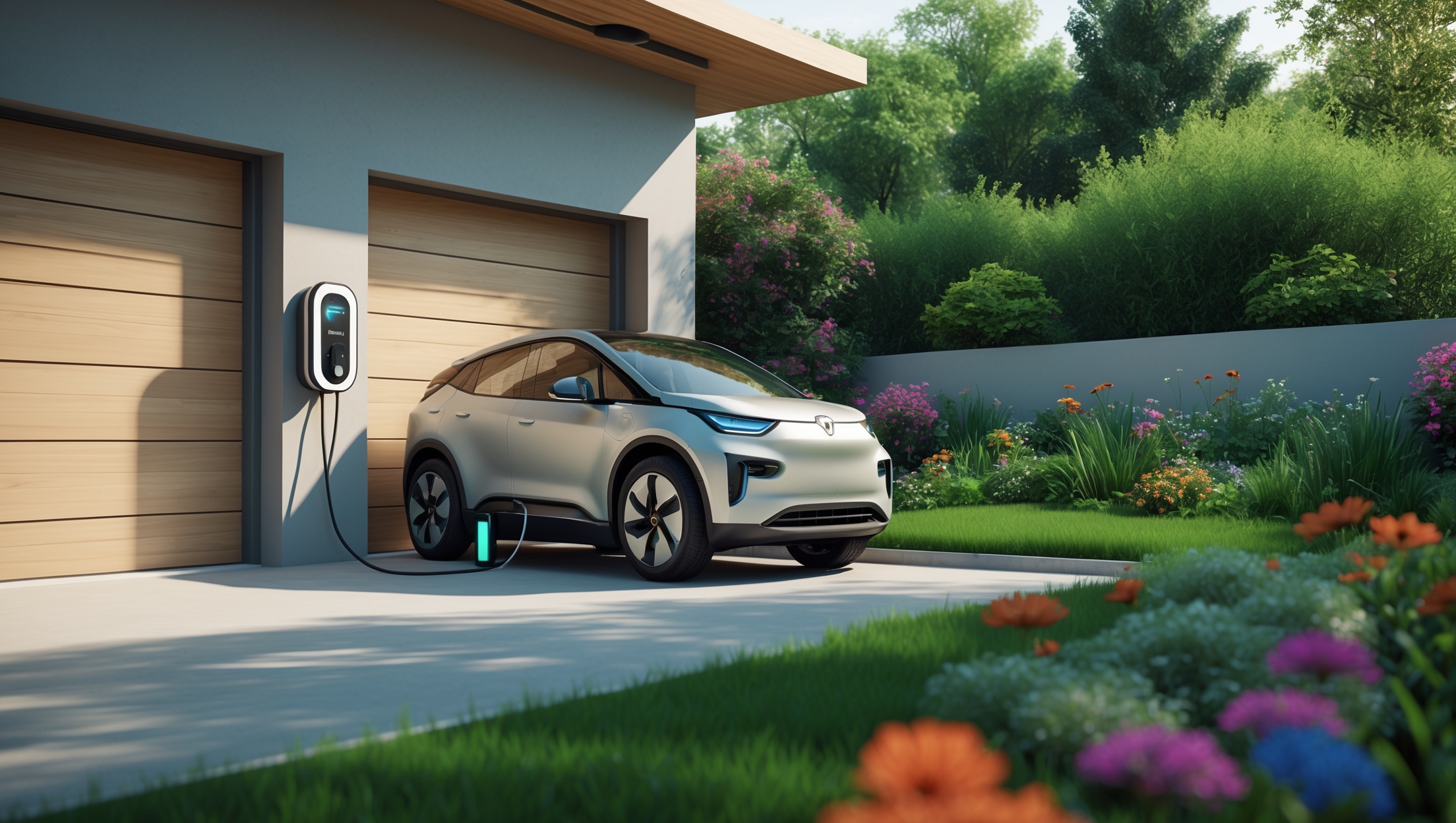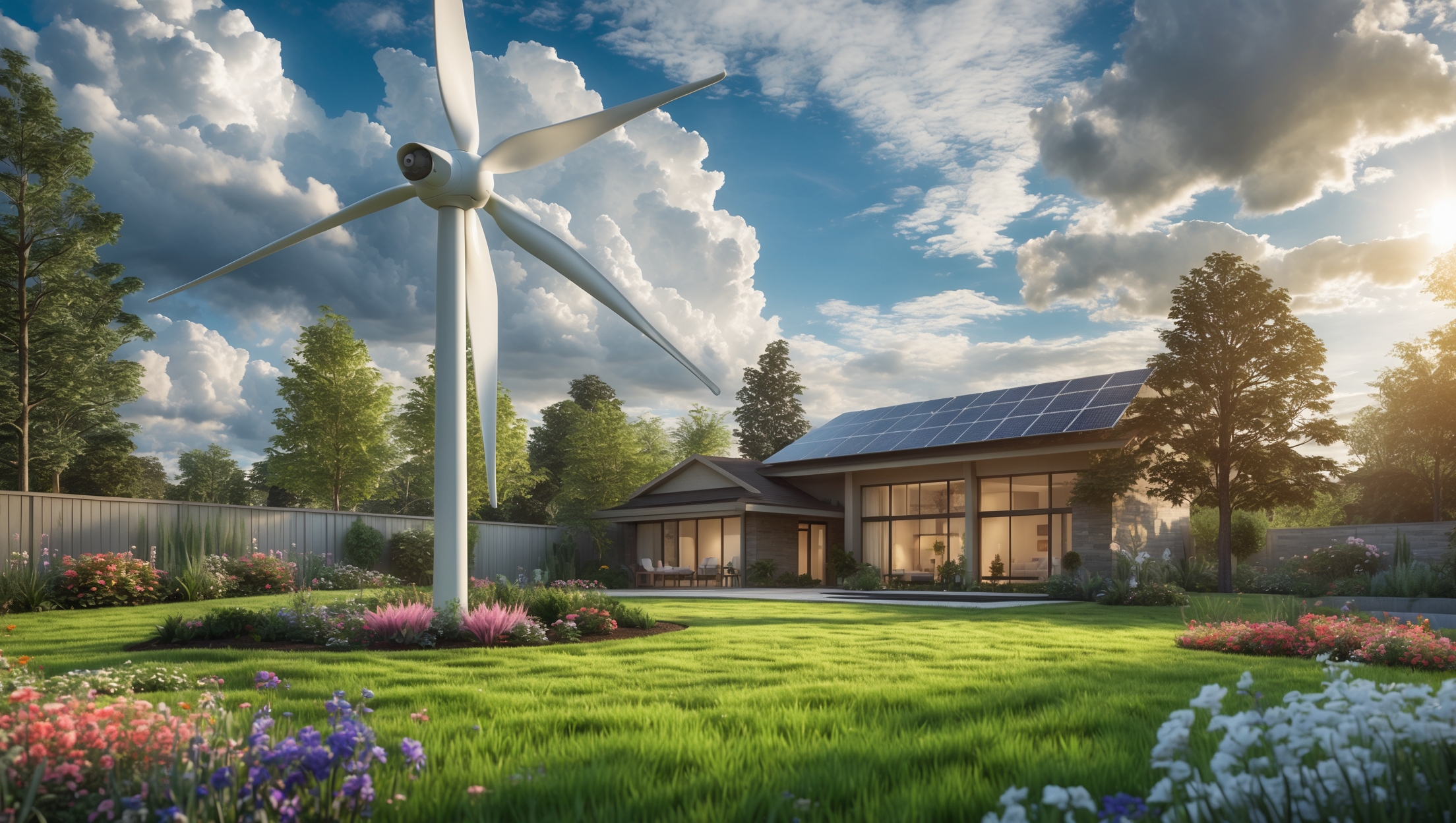Introduction: The Future of Outdoor Cooking is Solar-Powered
Imagine savoring summer evenings in your backyard, preparing delicious meals in a fully equipped outdoor kitchen—powered entirely by the sun. As sustainable living and green technologies become mainstream, the concept of a solar-powered outdoor kitchen is rapidly gaining traction among eco-conscious homeowners. Not only does it reduce your carbon footprint, but it also offers long-term cost savings, energy independence, and the freedom to cook outdoors without relying on the grid.
However, for many DIY enthusiasts, the prospect of designing and installing a solar-powered outdoor kitchen can feel daunting—especially when it comes to budgeting. What will you really spend? Which components are essential, and where can you save without compromising functionality? This comprehensive guide breaks down the true costs and offers practical budgeting strategies for building a DIY solar-powered outdoor kitchen. From solar panels and batteries to appliances and installation hardware, we’ll dive deep into every expense category, highlight effective ways to stretch your dollars, and help you create a sustainable culinary oasis that suits your lifestyle and budget.
Planning Your DIY Solar-Powered Outdoor Kitchen
Defining Your Needs and Scope
Before budgeting, clarify the purpose and scale of your outdoor kitchen. Will it be a basic grilling station with a fridge, or a full-featured setup with induction cooktops, lighting, and a dishwasher? The complexity of your kitchen directly affects the required solar system size and overall costs.
- Essential appliances: Grill, refrigerator, sink (water pump).
- Optional upgrades: Induction cooktop, oven, dishwasher, outdoor lighting, fans.
Draft a list of must-have features and any “nice-to-have” extras. Prioritize based on your cooking habits and available space.
Assessing Solar Potential and Site Considerations
Evaluate your backyard’s solar exposure. South-facing roofs or pergola structures with minimal shading are ideal. Use online solar calculators or a solar irradiance meter to estimate daily sun hours, informing your system’s design and cost.
- Space for panels: Ensure enough unshaded area for the required wattage.
- Proximity to kitchen: Shorter cable runs reduce installation costs and power losses.
Major Cost Categories Explained
1. Solar Power System Components
- Solar Panels: The core of your system. Quality monocrystalline panels typically cost $0.80–$1.10 per watt (2024 prices). For a 1,200-watt system (enough for a modest kitchen), budget $1,000–$1,300.
- Charge Controller: Manages energy flow to batteries. Expect $80–$200 for a reliable MPPT controller.
- Batteries: Store solar energy for evening use. Lithium iron phosphate (LiFePO4) batteries cost $400–$700 per kWh. A small kitchen may need 3–5 kWh ($1,200–$3,500 total).
- Inverter: Converts DC to AC for standard appliances. Pure sine wave inverters cost $200–$600, depending on wattage.
- Wiring, Breakers, Mounting Hardware: Cables, junction boxes, breakers, and racking add $300–$700.
Total solar system estimate: $2,800–$6,300
2. Outdoor Kitchen Appliances
- Electric Grill: Efficient models range from $250–$800.
- Outdoor Refrigerator: Energy-efficient, solar-ready units cost $400–$1,200.
- Induction Cooktop: $100–$400 for a portable, single or double burner.
- Lighting (LED): $50–$150 for weatherproof, solar-compatible fixtures.
- Water Pump/Sink: 12V DC pumps are $50–$150; fixtures and lines may add $100–$300.
- Optional Appliances: Dishwasher ($600+), oven ($500+), fans ($50–$200).
Total appliances estimate: $850–$3,000 (excluding luxury options)
3. Construction and Finishing Materials
- Countertops: Weatherproof options like granite or composite: $30–$100 per sq ft. For a 10 sq ft area, $300–$1,000.
- Cabinets/Frames: Stainless steel or weather-treated wood: $500–$2,000.
- Pergola or Shelter: Pressure-treated wood, aluminum, or steel: $800–$3,000 depending on size/material.
- Flooring (optional): Pavers or decking: $5–$15 per sq ft; $500–$1,500 for a modest area.
Total construction materials estimate: $1,800–$7,500
4. Tools and Safety Gear
- Basic tools: Drill, wire strippers, multimeter: $100–$300 (if not already owned).
- Safety gear: Gloves, goggles, insulated tools: $50–$150.
Total tools and safety gear estimate: $150–$450
Sample Budget Scenarios
Budget Outdoor Kitchen (DIY, Essentials Only)
- Solar system (1,200W, 3kWh battery): $2,800
- Basic grill, fridge, LED lighting: $900
- Simple countertop/frame: $900
- Tools/safety gear: $200
- Total: $4,800
Mid-Range Outdoor Kitchen (Expanded Features)
- Solar system (1,500W, 5kWh battery): $4,000
- Grill, fridge, induction cooktop, lighting, sink: $1,800
- Countertops, cabinets, pergola: $3,200
- Tools/safety gear: $250
- Total: $9,250
Premium DIY Kitchen (Luxury Finish, Full Solar)
- Solar system (2,000W, 7kWh battery): $6,300
- High-end appliances, oven, fans, dishwasher: $3,400
- Stone countertops, custom cabinets, large pergola, premium flooring: $7,500
- Tools/safety gear: $400
- Total: $17,600
Hidden Costs to Watch For
- Trenching and wiring: If you need to run cables underground, expect $10–$20 per linear foot for conduit and digging equipment.
- Permitting: Some municipalities require permits for solar installations or outdoor kitchens. Fees range from $100–$500.
- Upgrades to home electrical service: Rarely needed for standalone solar systems, but if grid-tied or integrating with home circuits, costs can rise.
- Shipping and delivery: Panels, batteries, and appliances may incur freight charges, especially for rural areas.
- Unexpected repairs: Budget 10% contingency for unforeseen issues (e.g., panel mounting on uneven ground).
How to Save Without Sacrificing Quality
Shop Smart and Source Sustainably
- Look for refurbished or surplus solar panels from reputable suppliers. These often come with warranties at 30–50% off retail.
- Buy appliances rated for energy efficiency to minimize your solar system size and costs.
- Consider phased upgrades: Start with essentials, then add features as budget allows.
- Repurpose materials: Use reclaimed wood or recycled pavers for construction.
- DIY as much as possible: Labor is a major expense. Self-installation saves thousands, provided you follow safety best practices.
Leverage Incentives and Rebates
Check for federal, state, or utility solar incentives. While small off-grid systems may not always qualify, some local programs offer rebates or sales tax exemptions on renewable energy equipment.
Budgeting Worksheet: Estimate Your Project
Use this worksheet as a starting point for your own project:
- Solar panels: __ watts x $1.00 = $____
- Batteries: __ kWh x $500 = $____
- Inverter/controller: $____
- Wiring/hardware: $____
- Grill: $____
- Fridge: $____
- Cooktop/oven: $____
- Lighting: $____
- Water pump/sink: $____
- Construction (countertops, cabinets, flooring): $____
- Pergola/shelter: $____
- Tools/safety gear: $____
- Permit fees: $____
- Contingency (10%): $____
- Total Projected Cost: $____
Practical Tips for Staying on Budget
- Track every purchase: Use a spreadsheet or budgeting app to log expenses as you go.
- Get multiple quotes: For large items or custom fabrication, compare at least three suppliers.
- Bundle shipments: Save on delivery fees by ordering major components together.
- Plan for seasonal sales: Appliances and outdoor fixtures are often discounted in late fall or early spring.
- Join DIY or green building forums: Community members often share deals or even gently used components.
Case Study: A Real-World DIY Solar Outdoor Kitchen Budget
Consider Jane and Alex, who built a solar-powered outdoor kitchen in their suburban backyard in 2023. Their goal was a mid-range setup with a grill, fridge, induction burner, LED lighting, and a small sink, all under a modern pergola.
- Solar panels (1,200W): $1,100 (refurbished, 5-year warranty)
- Charge controller/inverter: $400
- Batteries (4kWh LiFePO4): $2,000
- Mounting hardware/wires: $550
- Appliances: $1,600
- Countertops/cabinets: $2,100
- Pergola: $1,200 (DIY kit)
- Tools/safety gear: $240
- Permit: $180
- Contingency: $830
- Total: $10,200
They saved by purchasing a used fridge, repurposing leftover pavers for flooring, and assembling the pergola themselves. Their system powers all appliances for evening parties and charges fully during sunny days, with enough battery reserve for cloudy spells.
Long-Term Value: Why It’s Worth the Investment
While the upfront costs of a solar-powered outdoor kitchen may seem significant, the long-term benefits are compelling. Over a 10-year lifespan, the system can pay for itself through reduced utility bills, especially if you regularly entertain or cook outdoors. Maintenance costs are minimal—cleaning panels and occasional battery checks—while energy independence and climate resilience add non-monetary value.
Solar-powered kitchens also boost property value and appeal to environmentally-minded buyers. As battery technology improves and prices fall, future upgrades become even more accessible. Plus, the satisfaction of enjoying home-cooked meals in a beautiful, self-sustaining space is hard to quantify.
Conclusion: Building Your Sustainable Culinary Retreat
Constructing a DIY solar-powered outdoor kitchen is more achievable than ever, thanks to affordable, efficient solar technology and a wide range of energy-smart appliances. By understanding the true costs—from solar panels and batteries to tools, appliances, and construction—you can set realistic expectations, avoid common budgeting pitfalls, and make informed choices that align with your vision and values.
Start by defining your essential features, assess your site’s solar potential, and use the cost breakdowns and budgeting worksheet to map out your project. Remember, sustainability doesn’t have to mean extravagance—plenty of creative options exist for those on tighter budgets. Whether you begin with a basic off-grid grilling station or invest in a full-featured culinary oasis, every step toward a solar-powered outdoor kitchen moves you closer to energy independence, lower environmental impact, and a more enjoyable home life.
Ready to fire up your green kitchen dreams? With careful planning and smart spending, your sun-powered backyard retreat awaits—delicious meals and sustainable living included.





I’m curious how much solar panel capacity you realistically need for a full outdoor kitchen that includes a fridge, induction cooktop, and lighting. Have you found any rule of thumb for sizing panels to cover everything without undershooting on cloudy days?
For a full outdoor kitchen with a fridge, induction cooktop, and lighting, a common rule of thumb is to estimate your daily energy use in watt-hours, then size your solar array to be about 1.5 to 2 times that amount to account for cloudy days. Typically, this setup might need around 2,000 to 3,000 watts of solar panels, but always check the actual wattage of your appliances and consider your local sunlight hours for the best results.
I’d like to hear more about the installation process—specifically, is it realistic for someone with basic DIY skills to set up the wiring and batteries, or would hiring a professional be a safer bet for a solar kitchen?
Setting up wiring and batteries for a solar-powered outdoor kitchen can be challenging if you only have basic DIY skills. While you might handle mounting panels and simple connections, safely configuring batteries and wiring—especially for outdoor use—often requires electrical knowledge to avoid hazards. For reliable, safe operation, especially if your system will power multiple appliances, hiring a licensed professional is usually the best choice.
The article talks about assessing solar potential and site considerations. If my backyard only gets partial sun during the day, will I need significantly more solar panels or a bigger battery to keep everything running smoothly?
If your backyard gets only partial sun, you’ll likely need either more solar panels to compensate for reduced sunlight or a larger battery to store extra energy for cloudy periods and evenings. The best option depends on your usage patterns and how much sun your site receives. It’s also helpful to monitor your appliances’ energy needs to size your system accurately.
I’m a bit nervous about installation costs. Are there parts of setting up a solar-powered outdoor kitchen where it makes sense to DIY versus hire a professional, especially for wiring or setting up the batteries?
It’s wise to be cautious, especially with electrical work. You can definitely handle tasks like assembling the kitchen structure, mounting solar panels, and basic setup if you’re comfortable with tools. However, for any wiring involving the batteries or connecting the system to your home’s electrical grid, it’s safest to hire a licensed electrician. This ensures everything meets safety codes and avoids potential hazards.
The article mentions prioritizing must-have features over nice-to-have extras for budgeting. Do you have any advice on what components are worth splurging on versus where it’s more practical to save without losing functionality in a real outdoor kitchen?
Splurging on quality solar panels and a reliable battery storage system is wise, since these are vital for uninterrupted power. For appliances, invest in a durable fridge or grill if those are central to your cooking. You can save by choosing basic countertops and using weather-resistant but less expensive cabinetry instead of high-end finishes. Lighting and sinks can often be functional without going top-of-the-line.